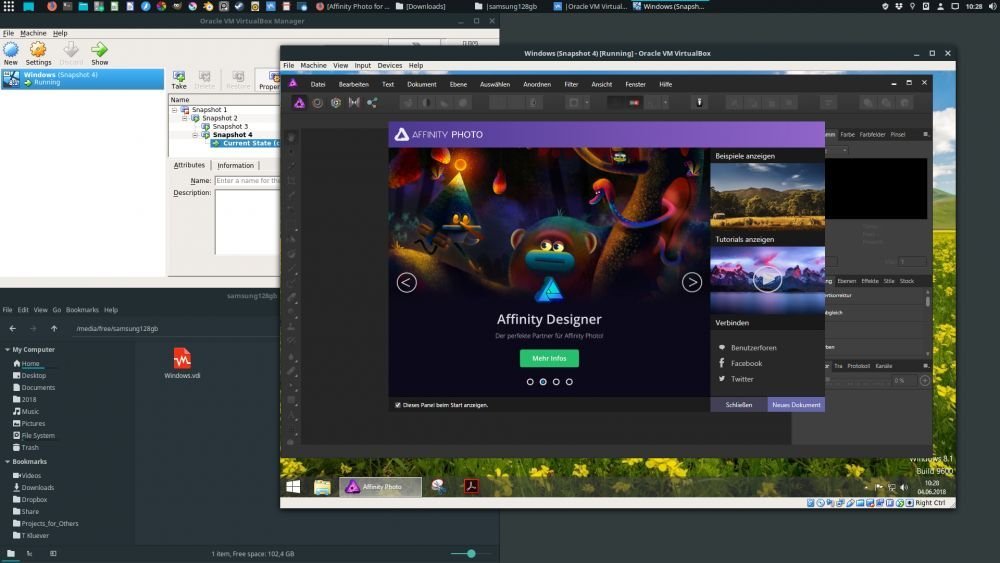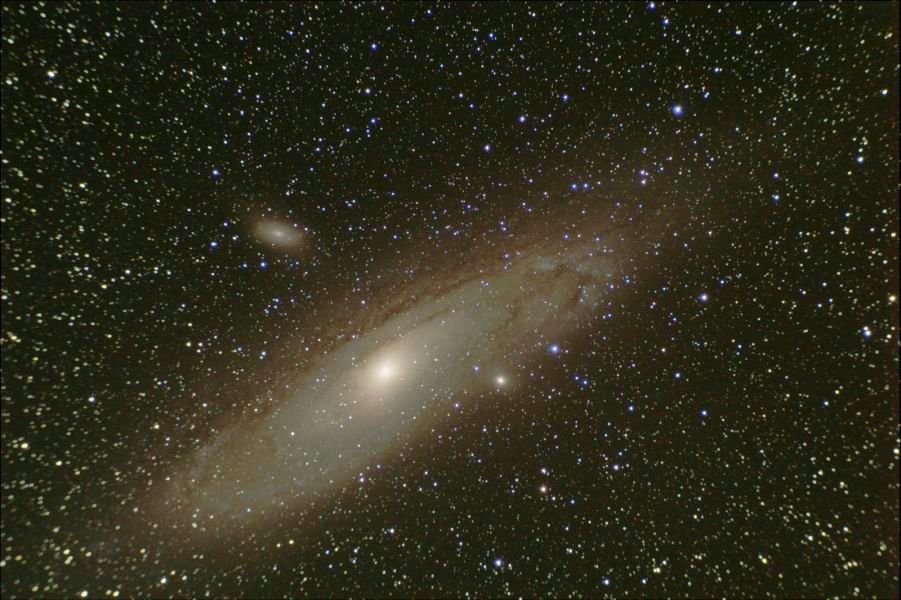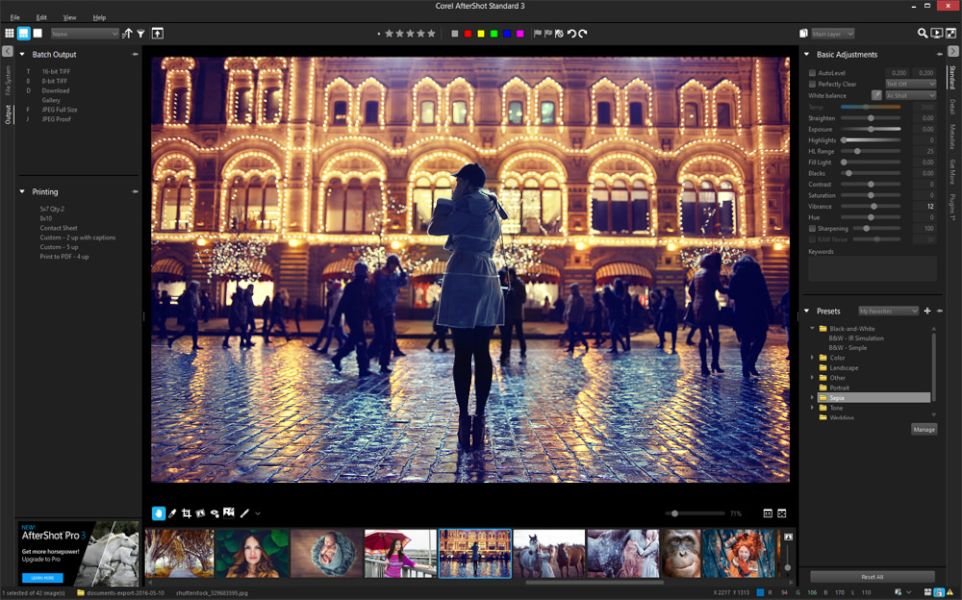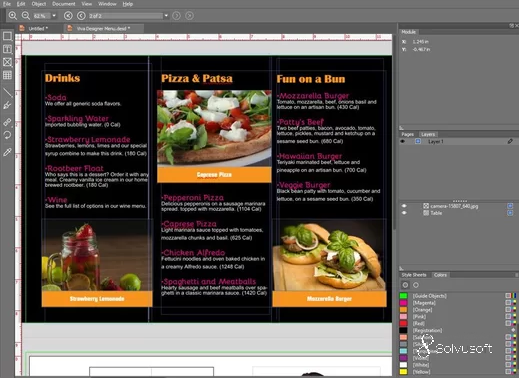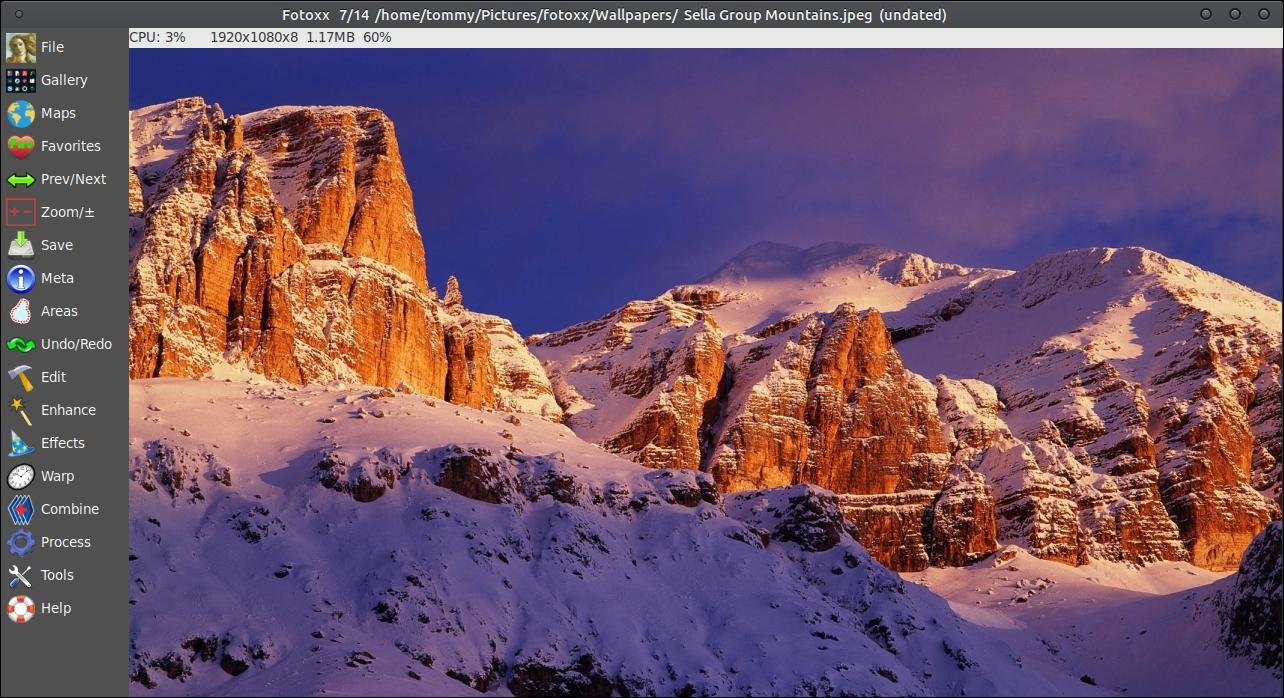
Snapseed
Members-
Posts
271 -
Joined
-
Last visited
Everything posted by Snapseed
-
Affinity products for Linux
Snapseed replied to a topic in Feedback for the V1 Affinity Suite of Products
Thank you very much for those clarifications for it is appreciated. To be fair in the second highlighted aspect, it was really only ever one particular individual who behaved in a confrontational and baiting manner. We currently have two known ways of getting the rather good affinity products to run on Linux machines. The first of which is dual booting which is somewhat cumbersome and the second of which is using virtual machine technology that can work very well as we can see below from forum member Hartmut Doering's very helpful advice although l personally wouldn't try this method on a computer with less than 16GB RAM: "Hi, AP has currently no maintainer for Wine, that's why it does not work flawlessly like PS in Wine. But I found a way to make it work. Instead of Wine which "emulates" Windows and needs a Maintainer who asks Serif which Libraries AP needs and puts them in the AP-Wine-emulation, I use Virtualbox. Virtualbox is a complete Virtual Machine, I had to install Windows in it. I found out AP worked flawlessly in Virtualbox when I give the Virtual Machine (VM) 8 GB of RAM and a separate SSD from Mint. Also, 3D Acceleration needs to be turned on. - The downside for some people is, you need a Windows Licence Key for this approach. + The upside is you have for example a super sturdy Mint Workstation, and Windows runs controlled inside it, with drag and drop and all the good stuff. + Also, you can snapshot the VM, so when I start it, it does not boot Windows and such. It just opens a Window with the Windows 8.1 Desktop and AP already open and ready to use. I just have to drag my file over in AP, hit fullscreen and get stuff done. + All these, Windows-Registry stability problems or updates that interfere with my schedule are gone. + Also, I can use 8.1 far beyond its support cycle because I can manage what access to the Internet I allow the VM specifically." (see the image at the end of this post) Thanks also go to forum member Xatonym for sharing his recent experiences above. That has reminded me that there is something else that we can try. There is a 30 day trial of CodeWeavers' Crossover - please see https://www.codeweavers.com/crossover/download We can download that, try the three Affinity products out and then report the bugs/errors back to CodeWeavers. This is an area where it would be commercially advantageous for CodeWeavers to get the Affinity products working under CrossOver because they would then gain extra sales of CrossOver. -
When a RAW developer?
Snapseed replied to Raff's topic in Feedback for the V1 Affinity Suite of Products
Eccellente! 🙂 -
When a RAW developer?
Snapseed replied to Raff's topic in Feedback for the V1 Affinity Suite of Products
If it's batch processing that you're after, you could try Exposure X7 or an equivalent piece of software. -
Affinity products for Linux
Snapseed replied to a topic in Feedback for the V1 Affinity Suite of Products
This is where there is an unfortunate Catch 22 situation. I have heard this so many times, "I'd like to move over to Linux but I need X, Y, and Z software to do my work" where X is Affinity Photo/Adobe Photoshop, Y is Affinity Designer/Adobe Illustrator and Z is Affinity Publisher/Adobe InDesign and even just working well with Wine would meet the needs of those people. There is also another route to take if Linux users have some spare time to help out. CodeWeavers are now looking for what they call BetterTesters to submit user reports about the performance of their favourite games and applications (in this case the three Affinity applications) on the latest release beta development versions of CrossOver (commercial Wine). More details can be found here: https://www.codeweavers.com/bettertester -
Affinity products for Linux
Snapseed replied to a topic in Feedback for the V1 Affinity Suite of Products
I agree that many people would be quite content with the Affinity product range working well with Wine and at some stage l hope that progress can be made in this area. l am not sure what the the highlighted bit means because l think it would be more logical to first start talking to CodeWeavers' CrossOver developers. -
Affinity products for Linux
Snapseed replied to a topic in Feedback for the V1 Affinity Suite of Products
I have to say that l like the way that they have worded it: "Compatible with Windows 7+ World Machine runs natively on a Windows PC. (Mac/Linux users: No official support is available. However, we've heard good things using Parallels & WINE)" In time, it would be nice to see similar wording also apply to Affinity Photo, etc in respect of Linux. -
Affinity products for Linux
Snapseed replied to a topic in Feedback for the V1 Affinity Suite of Products
That is excellent news that you have found a smooth solution to get Photo and Designer working very well on Linux via VM - happy days! Personally though, I wouldn't even try with anything less than 8GB to be on the safe side. For anyone else reading this post, Gnome Boxes should be available in the relevant Linux software store and you can install Windows plus other Linux distributions. It is also possible to install macOS using Gnome Boxes and online instructions are available on how to do just that. Here is an introductory guide to Gnome Boxes: -
Affinity for Android
Snapseed replied to IbrahimGHO's topic in Feedback for the V1 Affinity Suite of Products
I don't know what Serif Europe is planning/not planning to do but only catering for a more limited range of manufacturers, tablets and later Android versions is the way that they might possibly go assuming that they take any such decision.- 157 replies
-
- android
- affinity designer
- (and 3 more)
-
Affinity products for Linux
Snapseed replied to a topic in Feedback for the V1 Affinity Suite of Products
I think it is worth quoting Serif Europe's very own TonyB on this matter: "Affinity is mainly written in C++ with the Mac version front-end written in Objective C. Scripting will be Java script as we feel this will cover the largest use cases people want." Therefore, it won't necessarily be as easy as when using cross platform software at the outset for creating graphical user interfaces such as Qt as used by Bibble, which is now Corel AftershotPro, hence the Linux version of that software. Personally, I think it is a more realistic request to ask our friends at Serif Europe to consider looking at fine tuning the Affinity range of products so that they run well with CrossOver/Wine and that might, for example, involve cooperation with CodeWeavers' own developers. I am pretty sure that they would be open to such cooperation because that would be a win-win for everyone. As with all the other thread requests for features, what people forget/don't know is that Serif Europe is 100x smaller than the huge Adobe Corporation in staff numbers and so they cannot do everything. Indeed, I think it would be potentially risky to try to enter already saturated markets such as image organisers or RAW editors, for example. -
Affinity products for Linux
Snapseed replied to a topic in Feedback for the V1 Affinity Suite of Products
1. Personally, l would regard good Wine/Crossover capability as catering for Linux users. For example, PhotoScape is Windows only but their developers make the effort to make it Wine compatible so much so that the Snap version could easily be mistaken for a native Linux version. 2. I do recommend and suggest the Affinity range of products to people using Windows and macOS because they are good and they are are reasonably priced so making them really good value for money. Since there are no Linux or Wine-compatible versions of the Affinity softwares, I think it is fair to mention alternatives that are already out there because those products are not direct competitors with Affinity products precisely because Serif Europe does not yet make Linux or Wine compatible versions of their softwares. 3. If anyone is reading this thread who uses macOS or Windows but currently does not use Affinity products then l strongly recommend that you check them out starting with the videos below: -
Affinity products for Linux
Snapseed replied to a topic in Feedback for the V1 Affinity Suite of Products
The potential option of using the Affinity softwares via a virtual machine on a Linux computer has already been mentioned above in this thread and it turns out that an existing forum member, Hartmut Doering, has been able to make this solution work very well. His helpful advice is reproduced below: "Hi, AP has currently no maintainer for Wine, that's why it does not work flawlessly like PS in Wine. But I found a way to make it work. Instead of Wine which "emulates" Windows and needs a Maintainer who asks Serif which Libraries AP needs and puts them in the AP-Wine-emulation, I use Virtualbox. Virtualbox is a complete Virtual Machine, I had to install Windows in it. I found out AP worked flawlessly in Virtualbox when I give the Virtual Machine (VM) 8 GB of RAM and a separate SSD from Mint. Also, 3D Acceleration needs to be turned on. - The downside for some people is, you need a Windows Licence Key for this approach. + The upside is you have for example a super sturdy Mint Workstation, and Windows runs controlled inside it, with drag and drop and all the good stuff. + Also, you can snapshot the VM, so when I start it, it does not boot Windows and such. It just opens a Window with the Windows 8.1 Desktop and AP already open and ready to use. I just have to drag my file over in AP, hit fullscreen and get stuff done. + All these, Windows-Registry stability problems or updates that interfere with my schedule are gone. + Also, I can use 8.1 far beyond its support cycle because I can manage what access to the Internet I allow the VM specifically." -
Affinity products for Linux
Snapseed replied to a topic in Feedback for the V1 Affinity Suite of Products
With respect, no one is being forced to read or to comment in this particular thread. Furthermore, it is perfectly legitimate to politely make requests for new features in the Affinity range of good products and to ask that more operating systems are covered such as Android or Linux. This thread is also very useful because allows Linux users to share details of existing Linux software that can be used instead of the Affinity range of software. Personally, I would be quite content if the Affinity product range just ran well with Wine/CrossOver. Anyway, one criterion of good image editors is how well they deal with astrophotography (Affinity Photo is increasingly popular in that respect, e.g. in Astronomy Now magazine and mentions online, because it does not come with an exorbitant cost or a forever rental contract) and three celestial objects are presented below that have been processed in Linux with Pixeluvo, Fotoxx and PixInsight respectively: -
Affinity products for Linux
Snapseed replied to a topic in Feedback for the V1 Affinity Suite of Products
I don't need to use any VMs because I found Linux softwares that work well for me but it apparently runs fine: https://itsfoss.com/install-windows-10-virtualbox-linux/ It is probably better to raise such matters directly with Wine and Codeweavers staff directly and see what they say because Serif Europe has so far not given any signal that they are remotely interested in such a course of action (I am willing to be corrected on this matter). https://www.codeweavers.com -
Affinity products for Linux
Snapseed replied to a topic in Feedback for the V1 Affinity Suite of Products
It is already technically possible to get Affinity Photo, Affinity Designer and Affinity Publisher working well on Linux...but only by using virtual machine technology like VirtualBox, VMWare, etc. but that's best done with 16GB RAM upwards. Personally, I think that is a better solution than dual booting and other views are available. -
.webp support in Affinity Suite
Snapseed replied to rnmartinez's topic in Feedback for the V1 Affinity Suite of Products
I agree, but until such time that Serif Europe addresses this matter, it is useful to share knowledge of other software that can help out in the meantime. -
.webp support in Affinity Suite
Snapseed replied to rnmartinez's topic in Feedback for the V1 Affinity Suite of Products
It's good to hear that you have been able to find some intermediate converting softwares that can help. 🙂 -
Affinity products for Linux
Snapseed replied to a topic in Feedback for the V1 Affinity Suite of Products
It is a complete contrast with the developers at PhotoLine who make the effort to ensure that their software works well with Wine so that Linux users are not left out. -
.webp support in Affinity Suite
Snapseed replied to rnmartinez's topic in Feedback for the V1 Affinity Suite of Products
Until such time as that capability does arrive in the Affinity software range, Nomacs is your new zero cost friend: https://nomacs.org/ -
Affinity products for Linux
Snapseed replied to a topic in Feedback for the V1 Affinity Suite of Products
I agree that it would be nice to have a Linux version of the Affinity softwares, or at least versions that ran well with Wine. That said, on Linux an equivalent professional range of products is still possible with, for example, Gravit, PhotoLine + Wine and VivaDesigner. -
Affinity products for Linux
Snapseed replied to a topic in Feedback for the V1 Affinity Suite of Products
My own view has always been "Use the operating system that works best for you" whether that is Windows, macOS, Linux or BSD and there will always be idiosyncrasies, faults and mismanagements with all four of those operating systems at one time or another. In my case, I chose Linux because I wanted a stable and secure operating system but I knew that came with a reduced set of software (the same applies to BSD) compared with Windows and macOS. That said, I have been able to find alternatives for everything I used under Windows. For example, I now use a combination of Softmaker Office and the free online version of Microsoft Office and no one can tell that I am not using 100% Microsoft products. Some broad alternatives to Adobe Illustrator/Affinity Designer are listed below: Inkscape https://inkscape.org/ Gravit Designer https://www.designer.io/en/ Vectr https://vectr.com/ Figma https://www.figma.com/ https://github.com/Figma-Linux/figma-linux Canva https://www.canva.com My design needs are modest so I can get away with using Canva but if I needed more than that, I would use Gravit: -
Affinity products for Linux
Snapseed replied to a topic in Feedback for the V1 Affinity Suite of Products
I have to ask this. Do you do anything other than malignant, toxic negativity? After all, you are not obliged or required by law to post in this thread. To be fair, Corel does provide both .deb and .rpm files for AfterShot Pro 3. Go to the link below, click on the green Download Trial bar and the files will appear. https://www.aftershotpro.com/en/free-trials/ I have successfully used Alien in the past to convert between .deb/.rpm files and it worked just fine. I have also used AfterShot Pro and I think it's a very good alternative to Adobe's perma-rental Lightroom. I should add that we have plenty of choice on Linux when it comes to RAW editing/cataloguing software including, but not limited to, LightZone, Darktable, RawTherapee, ART, etc. -
Affinity products for Linux
Snapseed replied to a topic in Feedback for the V1 Affinity Suite of Products
There is a way round that and l hope that you have at least 16GB of RAM. What you could do is run the Affinity applications on macOS or Windows inside a virtual machine within Debian Linux. I have enclosed examples below and there are plenty of tutorials on how to do this on Youtube. Good luck! Links: https://www.linuxuprising.com/2021/03/install-macos-big-sur-or-catalina-in.html https://betterprogramming.pub/how-to-run-macos-inside-a-virtual-machine-on-linux-4d6ce7cd493e?gi=b749de128495 https://itsfoss.com/install-windows-10-virtualbox-linux/ -
Affinity products for Linux
Snapseed replied to a topic in Feedback for the V1 Affinity Suite of Products
As someone once said about Krita over at Digital Photography Review, "It is photoeditor hidden in paint application..." https://www.dpreview.com/forums/thread/4105149 In terms of equivalents to Affinity Publisher, there are some alternatives on Linux, the most widely known of which is Scribus: https://www.scribus.net/ However, it is not the only one and PageStream is one alternative although it does have an old school interface: https://pagestream.org/ Lucidpress is an online equivalent so it is available to Linux users: https://www.lucidpress.com/pages/ The alternative that has impressed me the most though is VivaDesigner that has a Linux version: https://www.viva.us/en/products/desktop-publishing/vivadesigner-desktop-version -
Affinity products for Linux
Snapseed replied to a topic in Feedback for the V1 Affinity Suite of Products
I'm not even sure that they are actively working on making their software compatible with Wine (although I would be only too happy to be corrected on that matter). PhotoLine is up there with both Photoshop and Affinity Photo in terms of capability but it is much less well known. They don't make a specific Linux version but they do make sure it is compatible with Wine so that Linux users are not left out. Tutorials are below: http://www.russellcottrell.com/photo/PhotoLine/downloads/PhotoLineTutorial.pdf http://www.russellcottrell.com/photo/PhotoLine/basic.htm http://evrencomert.com/PhotoLine.htm I must stress this again - PhotoLine on Wine for Linux users is not a competitor for any Serif Europe product precisely because Serif Europe does produce any software that is compatible with Linux or Wine. -
Affinity products for Linux
Snapseed replied to a topic in Feedback for the V1 Affinity Suite of Products
Given the statistics being reported from Phoronix from only a few months ago, it's going to be quite some time before Wayland becomes mainstream: Less Than 10% Of Firefox Users On Linux Are Running Wayland https://www.phoronix.com/scan.php?page=news_item&px=Firefox-Wayland-X11-Stats I also like this comment taken from one of the senior commentators over on the Phoronix forums: "You failed to read the fine print at the bottom of all the wayland promises over the past 12 years: "It will improve your performance. Next year. Or the year after that. Or maybe the year after that. If you have the right hardware. And the right desktop. On certain tasks with certain apps. Maybe. Depends on the alignment of the stars and the moon, and if Jupiter is in the 2nd house"." In other news, Nomacs is a good, basic image editor for Linux: https://nomacs.org/ For image editors on Linux with more capabilities, there are other softwares such as... https://photoflare.io/ https://apps.kde.org/en-gb/showfoto/ https://kornelix.net/fotoxx/fotoxx.html

